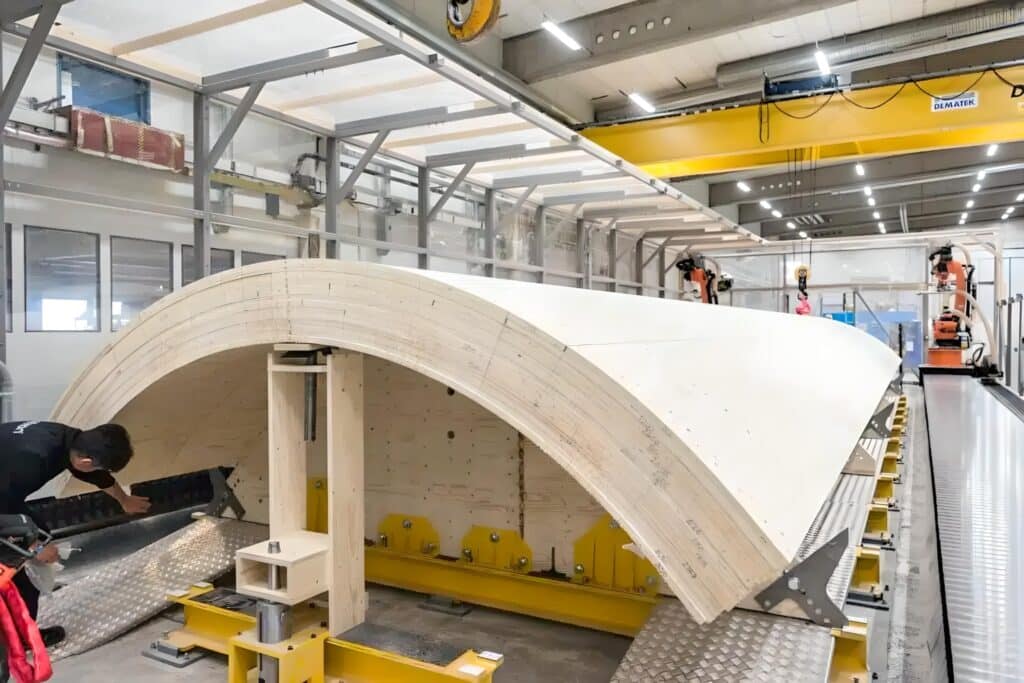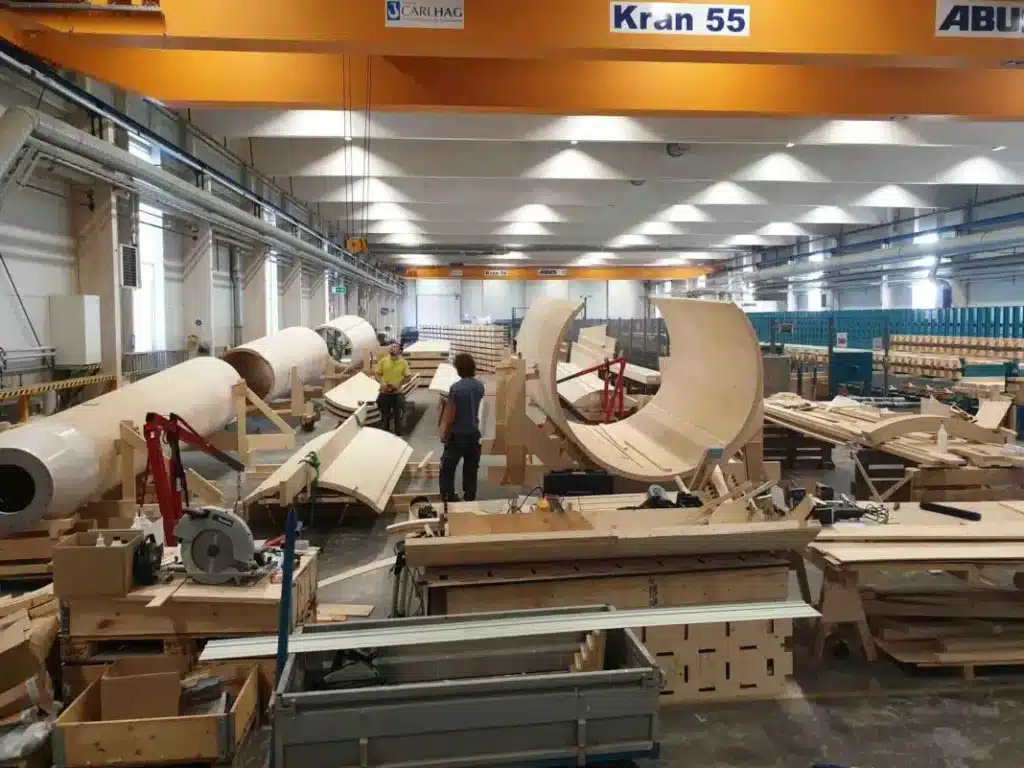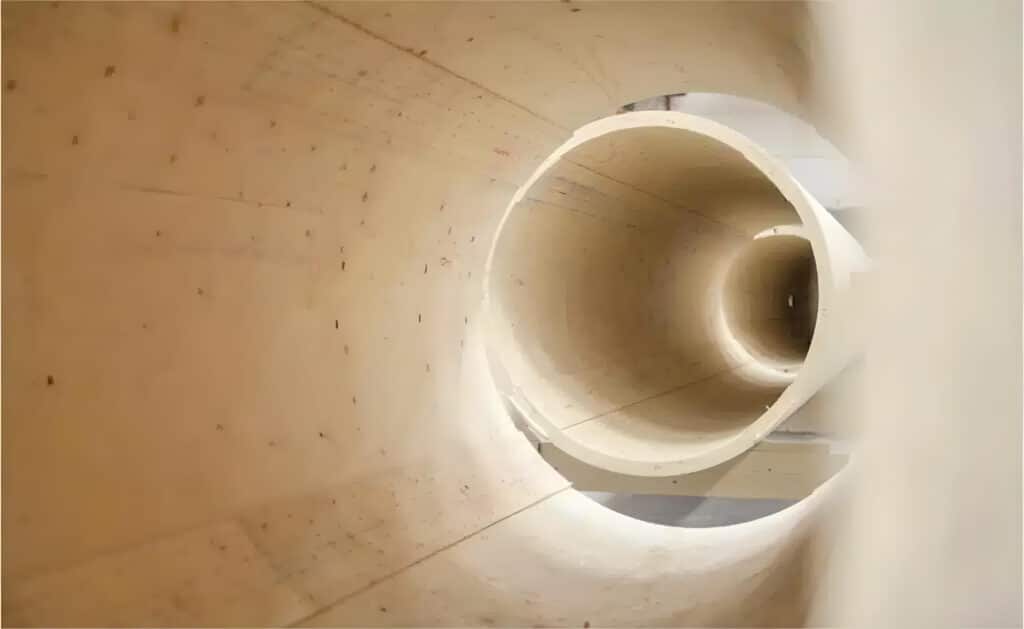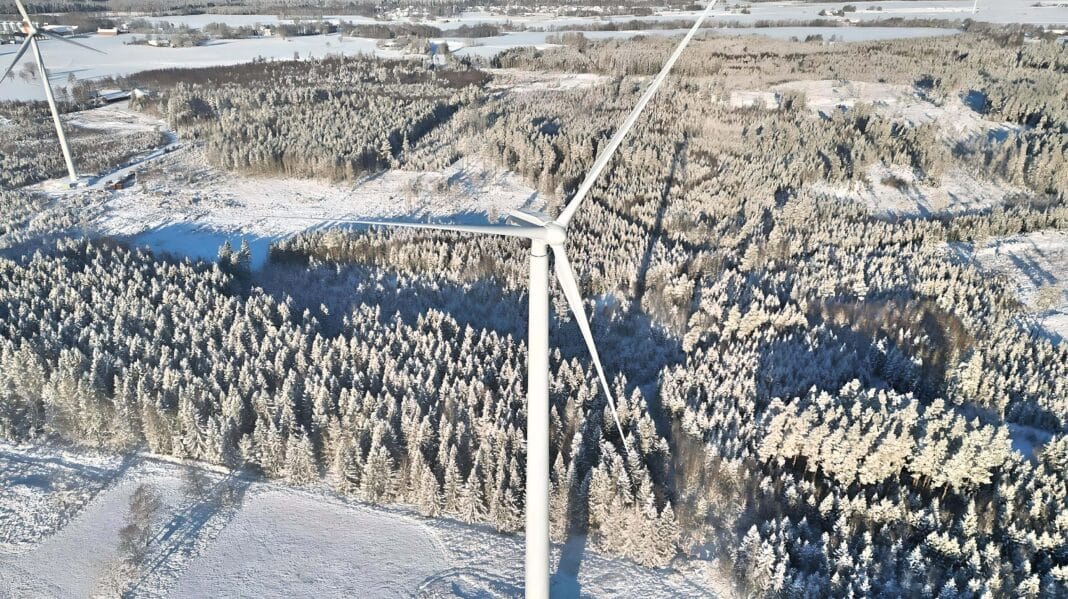The world’s tallest timber turbine became operational after Swedish start-up Modvion finished work on its new 150m superstructure, providing power to 400-plus dwellings in Skara, Sweden.
It is the latest move by Modvion, which is using timber-based turbines to spark a new renewables industry – using laminated veneer lumber (LVL) supplied by Metsa Wood and Swedish tech know how to create climate-neutral wind power suitable for a booming global energy market.
“It’s got great potential,” according to Otto Lundman Modvion’s CEO, who said timber-based turbines can cut emissions by 90% compared to steel alternatives.
“Wood allows the company to build higher towers at a lower cost,” which “makes wind power more efficient since winds are stronger and more stable higher up.”
Investment in renewables is surging, with Denmark, Poland, Netherlands, Germany, and Italy among the leading EU economies turning to wind power in its scramble to meet climate commitments.
According to Dr Dan Ridley-Ellis, an expert in wood science, LVL has “great potential” to transform wind turbine construction.
“This is not an entirely new concept – people have built wind turbines and components from wood before,” Dr Ridley-Ellis said, Head of the Centre for Wood Science and Technology at Edinburgh Napier University.
“This specific type of engineered wood, LVL, is somewhat like plywood, but instead of the layers being 90˚ to each other, different layers all go in the same direction.”



For Mr Lundman, the aim is to use wood rather than steel to take wind power to much greater heights – as the industry looks for cost-effective alternatives for future wind turbine constructions.
According to Pär Hallgren, Modvion’s Head of Procurement, the surge in interest in wood-based turbines could lead Modvion to become the largest LVL buyer in the European market.
In a world of road tunnels, bridges and roundabouts, industry insiders have flagged concerns with steel supply, limiting how tall new steel turbines can be.
In April, Wood Central reported that Modvion had partnered with PEFC-certified Metsa Wood. And with EU support, it now harnesses powerful winds to offer cost-effective energy production and act as a carbon sink.
From the outside, there is little difference between the wooden turbine and its steel cousins. Both have a thick white coating to protect them from the elements, and blades made primarily from fibreglass are attached to a generator, which produces electricity when it turns.
The 150m turbine strength comes from its 105m round base, which comprises 144 LVL layers, making its walls extra thick – LVL is essential with the strength-to-weight ratio, resulting in lighter towers with less need for expensive reinforcements.

According to David Olivegren, co-founder of Modivan, the 3mm-thick layers of engineered spruce “is (our) secret weapon,” controlling the wall’s strength and flexibility.
At its Gothenburg factory, layers of spruce are bound to make the curved sections – with pieces glued into cylinders and stacked on each other to make the tower.
“Wood and glue is the perfect combination; we’ve known that for hundreds of years,” Mr Olivegren says. “And because using wood is lighter [than steel], you can build taller turbines with less material.”
Speaking to the BBC, Mr Lundman and Mr Olivegren said the product’s “big selling point” is that mass timber allows towers “to be built in smaller, more easily transported modules.”
That will make building tall towers much more accessible and take the pieces to challenging locations.

Earlier this year, UK energy firm Renewable Energy Systems (RES) signed a letter of intent with Modivan to install 20 new towers per year over ten years starting in 2026.
“LVL enables high material efficiency, making it ideal for sustainable construction,” says Henrik Söderström, Sales and Marketing at Metsä Wood.
The volume of wood needed for an LVL-based turbine is between 300 – 1200 m³ depending on the height and load. “That means an LVL carbon storage capacity between 240 – 950 tonnes CO2eq per tower,” Mr Söderström said.
However, Dr Maximilian Schnippering, Sustainability Head for Siemens Gamesa – one of the world’s largest turbine manufacturers – says more pieces are likely to mean more trucks, more people and more time to complete the installation.
He considers the modular system “an advantage” and that wooden towers can “nicely complement” steel towers.
“The industry wants to build turbines with a 300m [blade] tip height, which means a tower which is 200m or more. With modularity, you can do that,” says Mr Lundman.
Steel could be modular, too, with the cylinders cut up into smaller pieces, but the extra effort needed to bolt the pieces together adds to costs and maintenance.
One of Modvion’s investors is renewable energy giant Vestas. It has installed more wind power capacity around the world than any other.
Jan Hagen, Vesta’s Chief Technology Officer for northern and central Europe, said the Modvion solution has “tremendous potential” in the market for taller turbines, with wooden turbines “particularly well suited” to play a role.
“What we find interesting about this is its combination of an economically viable solution that addresses the transport bottleneck and a sustainable solution,” Mr Hagen says.
Though wind power is cheaper and cleaner than almost all other forms of electricity generation, making steel involves scorching furnaces and almost always burning fossil fuels. That means CO2 emissions – the main driver of climate change.
Modvion says using wood instead of steel eliminates the wind turbines’ carbon footprint, making them carbon-negative.
That’s because the trees take carbon dioxide out of the atmosphere when they are alive, and when they are chopped down, the carbon is stored in the wood. The carbon is not released as long as the wood doesn’t end up rotting or being burned.
About 200 trees went into Modvion’s turbine tower, and the company says they are farmed sustainably, meaning when they are harvested, more are planted.
SSE Renewables, one of the UK’s largest wind power producers, told the BBC it was aware of Modvion’s work and would look into wooden towers as “an alternative technology” to steel.
However, many of SSE’s projects are offshore, which can be reached using huge ships – meaning the modular transport benefits are less pronounced.
Modvion says it hopes to build another taller turbine soon, and if all goes well, it will open a facility that will produce 100 wooden modular turbines a year in 2027.
“The industry is currently putting up 20,000 turbines yearly,” Lundman says. “Our ambition is that in 10 years, 10% of those turbines – about 2000 – will be wooden.”







